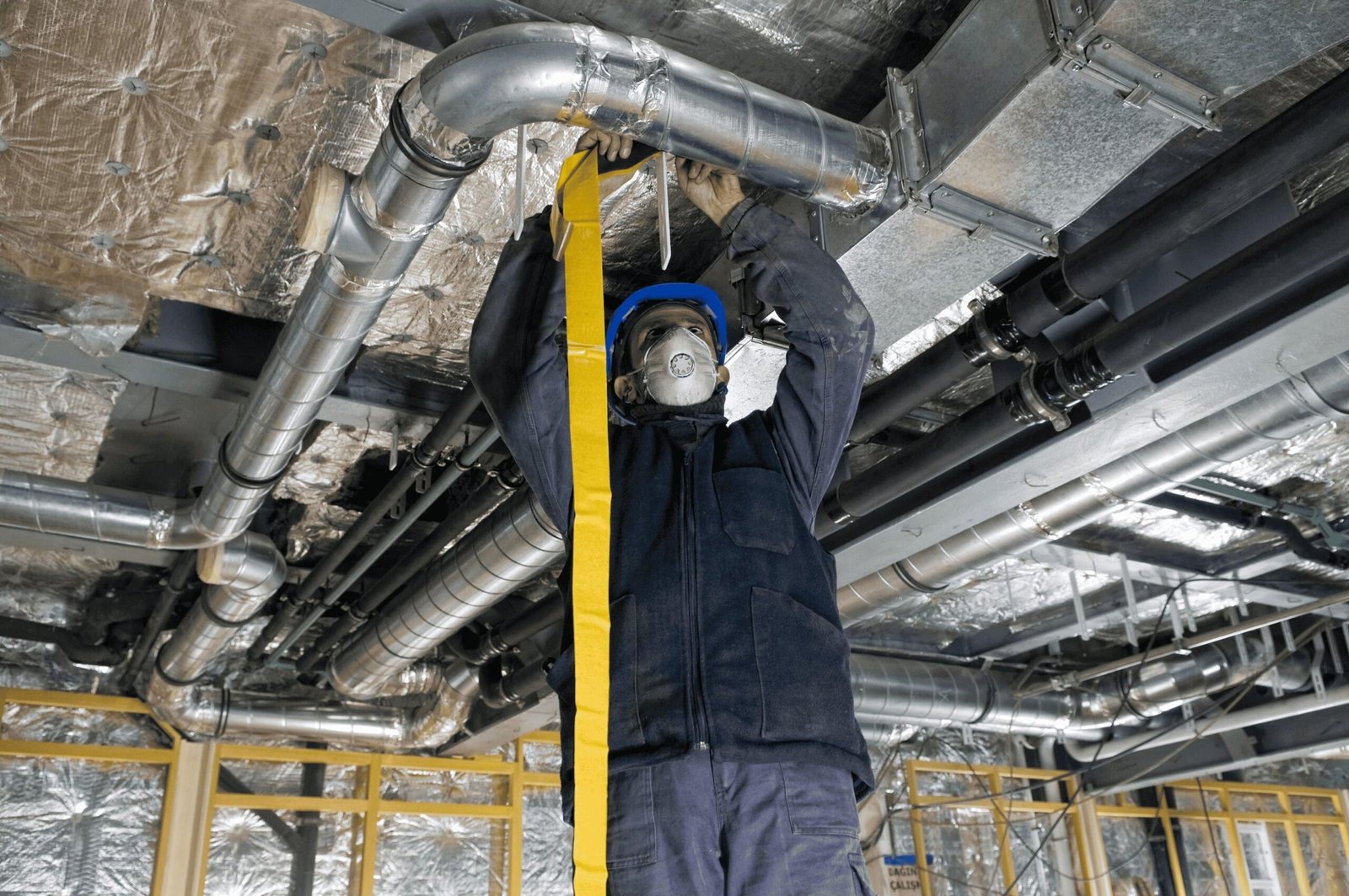Ductwork is an essential component of any HVAC (Heating, Ventilation, and Air Conditioning) system. It serves as a network of passages that distribute cooled or heated air throughout a building, ensuring comfort and proper air circulation. Efficient ductwork improves energy efficiency, enhances indoor air quality, and maintains consistent temperature control. A well-maintained ductwork system can significantly impact energy savings and overall system performance.
How Does Duct work?
Ductwork functions by distributing conditioned air from the HVAC unit to various rooms through a network of air channels. The system’s blower fan pushes the air through ducts made from materials such as metal, fiberglass, or flexible plastic. Return ducts then transport the air back to the HVAC unit for reconditioning. Several factors impact ductwork performance, including size, sealing, insulation, and design layout. Properly sized and well-sealed ducts help prevent air leaks and energy loss, while effective insulation maintains consistent temperatures. A strategically designed ductwork layout minimizes pressure drops and enhances overall efficiency.
Types of Ductwork
- Rigid Ducts: Solid and durable, often made from galvanized steel or aluminum. They are excellent for long-term use but require careful planning and installation.
- Flexible Ducts: Made from a bendable plastic material reinforced with wire, making them ideal for tight spaces. Proper installation is crucial to avoid airflow restrictions.
- Pre-Insulated Ducts: These ducts have built-in insulation, which enhances energy efficiency and reduces the need for additional insulation layers.
- Fabric Ducts: Commonly used in commercial applications, they provide uniform air distribution and are lightweight.
- Fiberglass Lined Ducts: These ducts help in soundproofing and temperature regulation but require proper maintenance to prevent mold growth.
Pre-Insulated Ducts
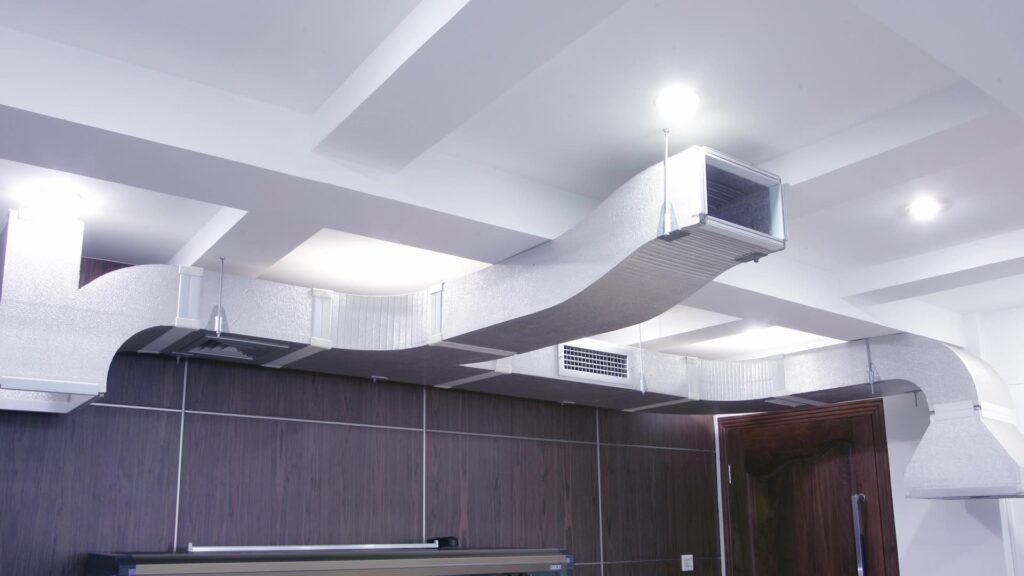
Pre-insulated ducts are a popular choice due to their excellent thermal performance. These ducts are manufactured with built-in insulation, reducing the need for additional wrapping. They improve energy efficiency by minimizing heat loss, making them a cost-effective option for HVAC systems. Additionally, they are lightweight and easy to install, leading to reduced labor costs. Their improved soundproofing helps in quieter HVAC operation, and they prevent condensation, ensuring the longevity of the ductwork system. Another significant advantage of pre-insulated ducts is their hygienic benefits, as they are less prone to mold and bacteria growth compared to traditional metal ducts.
Flexible Ducts
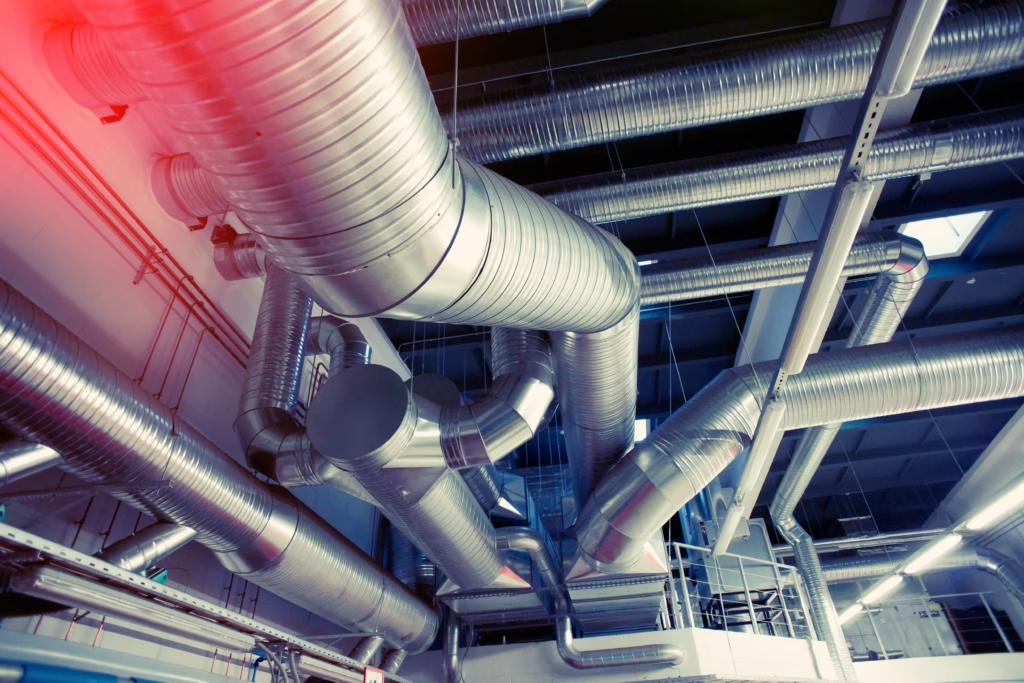
Flexible ducts are a versatile option often used in tight spaces where rigid ductwork is difficult to install. They are made from a flexible plastic material reinforced with wire coils, making them adaptable to various layouts. These ducts are easier to install and more cost-effective compared to rigid ducts. When properly installed, they reduce the risk of air leakage, improving the overall efficiency of the HVAC system. Flexible ducts are widely used in both residential and commercial settings due to their adaptability. However, flexible ducts also present some challenges. Improper installation can lead to airflow restrictions, reducing HVAC efficiency and increasing energy costs. Excessive bending and sagging can cause poor airflow, requiring proper support and careful installation techniques to maintain their performance.
Round ducts
Round ducts are widely used in HVAC (Heating, Ventilation, and Air Conditioning) systems due to their efficiency and cost-effectiveness. Their circular shape allows for better airflow, reduced friction, and minimal pressure loss, making them a preferred choice for air distribution.
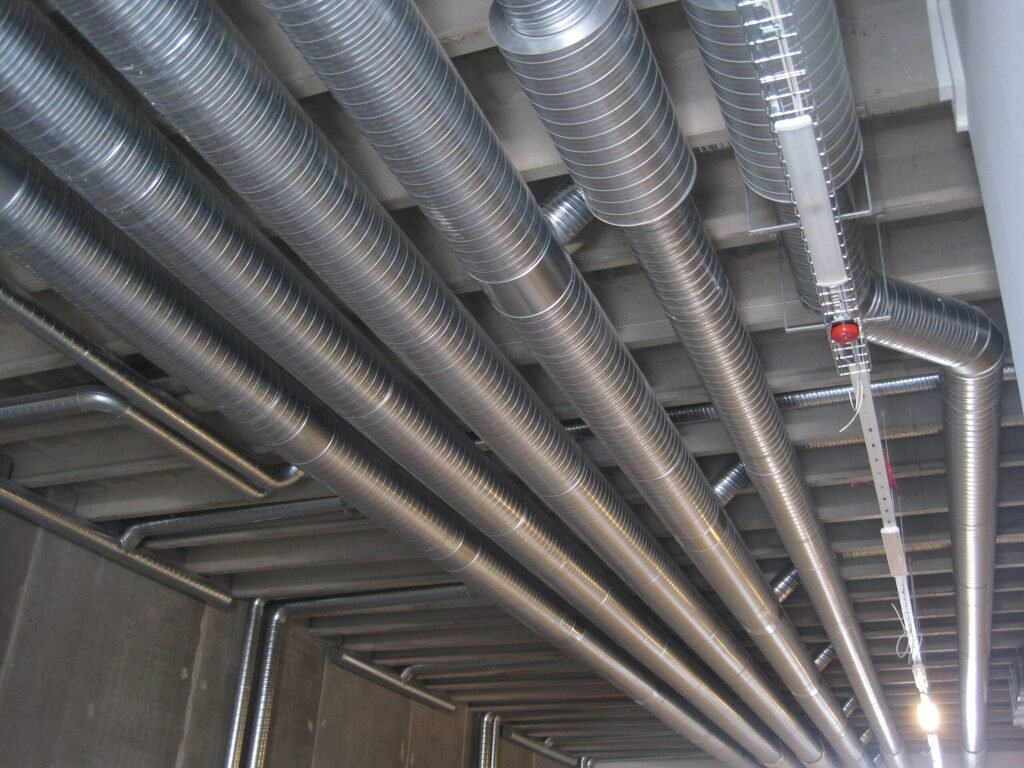
Key Benefits of Round Ducts:
Improved Airflow – The smooth, curved design reduces resistance and enhances air circulation.
Energy Efficiency – Less pressure drop means lower energy consumption.
Cost Savings – Requires less material compared to rectangular ducts, reducing costs.
Easy Installation – Lightweight and simpler to handle, making installation quicker.
Reduced Noise – Generates less vibration and airflow noise, ensuring quieter operation.
Round ducts are an excellent choice for residential, commercial, and industrial HVAC systems. Their ability to maintain consistent airflow while reducing energy costs makes them a smart and sustainable option.
Duct Factory and Manufacturing Process
A duct factory is a facility where ductwork materials are fabricated to meet specific HVAC requirements. The manufacturing process begins with material selection, where metal, fiberglass, or other materials are chosen based on the application. The materials are then cut and shaped using specialized machinery to match required specifications. Insulation and coating are applied to enhance thermal performance, followed by rigorous quality testing to ensure airtightness, durability, and compliance with industry standards. Many modern duct factories focus on sustainability, using eco-friendly materials and efficient production methods to reduce environmental impact. Additionally, they offer customized ductwork designs tailored to specific HVAC needs.
Advantages of Choosing Ducted Air Conditioning
Ducted air conditioning is a centralized cooling system that distributes air through ductwork to various rooms, providing consistent temperature control. One of its primary advantages is even cooling throughout a building, eliminating hot and cold spots. This type of system is also aesthetically appealing, as the ducts are hidden within ceilings or walls. It is highly efficient, particularly with advanced zoning capabilities that allow different areas to be cooled at different temperatures, optimizing energy usage. Another key benefit is its quieter operation compared to split or window AC units, making it ideal for residential and commercial spaces. Additionally, ducted air conditioning increases property value as it is considered a premium feature.The key components of a ducted air conditioning system include the central unit, which is typically installed on the roof or in an enclosed space. The ductwork network distributes conditioned air throughout the building, while air vents and registers control airflow direction in each room. Zoning controls enhance efficiency by allowing users to set different temperatures for different areas, reducing energy consumption.
Importance of Proper Duct Insulation
Proper ductwork insulation is crucial for maintaining energy efficiency and preventing unnecessary heat loss or gain. Insulated ducts help maintain the desired temperature of conditioned air as it travels through the ductwork, reducing the strain on HVAC Services. Without proper insulation, ducts can develop condensation, leading to mold growth, structural damage, and decreased air quality. Insulating ductwork not only improves overall system efficiency but also contributes to cost savings by reducing energy consumption. Homeowners and businesses should prioritize insulation when designing or upgrading their HVAC systems to ensure long-term performance and comfort.
Common Ductwork Problems and Their Solutions
Ductwork can experience several common problems that impact HVAC efficiency and indoor air quality. Air leaks are one of the most significant issues, as they can reduce efficiency by up to 30%. Regular inspections and sealing leaks with duct tape or mastic sealant can prevent energy loss. Poor airflow is another common issue, often caused by obstructions, kinks, or poor ductwork design. Ensuring proper installation and periodic maintenance can resolve this problem.
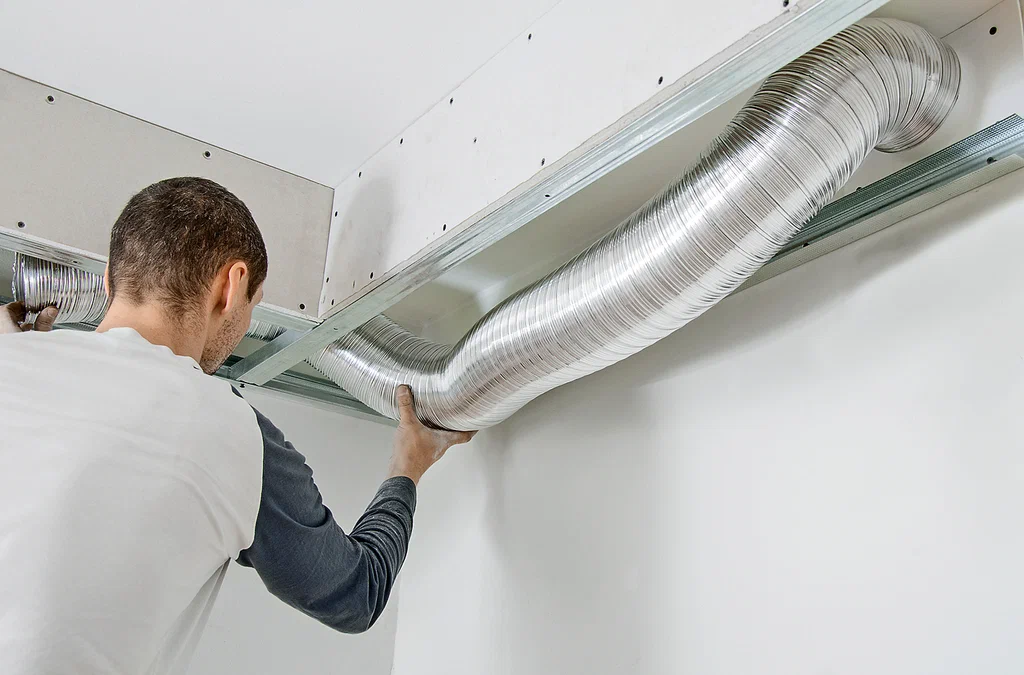
Dirty ductwork can accumulate dust and debris, circulating allergens and contaminants throughout the building. Regular ductwork cleaning improves air quality and system efficiency. Incorrect ductwork sizing can also impact performance. If ducts are too small, they restrict airflow and overwork the HVAC system, while oversized ducts can lead to ineffective operation. Consulting a professional HVAC contractor ensures the correct ductwork size for optimal performance.
Conclusion
Selecting the right ductwork is essential for maximizing the efficiency and performance of an HVAC system. Whether opting for pre-insulated ducts, flexible ducts, or a full ducted air conditioning setup, proper design and installation are crucial for optimal functionality. High-quality ductwork enhances energy efficiency, improves indoor air quality, and ensures greater comfort. For homeowners and businesses aiming to optimize their HVAC systems, consulting an experienced HVAC contractor can help identify the best ductwork solutions tailored to specific needs. Regular maintenance and inspections further enhance efficiency and longevity. Well-maintained ductwork not only reduces energy costs but also extends the lifespan of the HVAC system while promoting healthier indoor air quality.
For expert HVAC solutions, visit Airlution today and ensure top-quality ductwork for your space!

